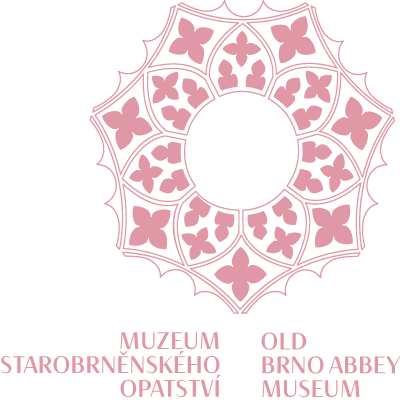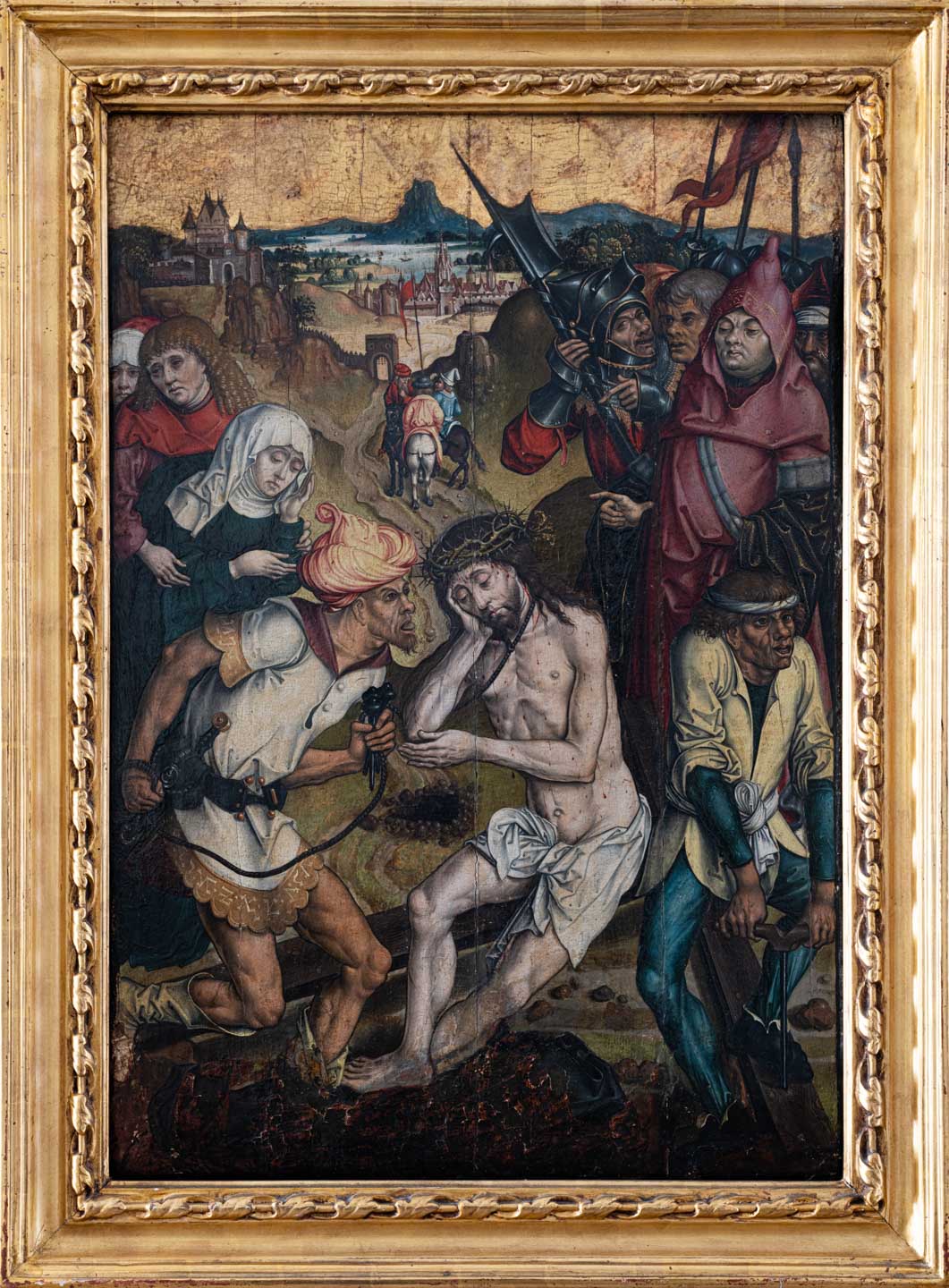Sorrowful Christ (Man of Sorrow)
Brno, 1490–1500 | Tempera, gilt, wooden panel | It comes from the Cistercian monastery in Old Brno, in 1956-1996 stored in the Moravian Gallery.
The subject depicts Christ resting at the end of the hardships and humiliation he had to undergo on his harrowing journey to the execution ground (Via Dolores). The earthly pilgrimage of the living Christ was at this moment coming to a close and his human nature was emphasised. The exhausted, almost naked body of Christ, with the visible marks of the scourge and torture, does not resist and only resignedly accepts the fate that has been marked out for him. A crown of thorns weighs down Christ’s head, with rivulets of blood running down it; the Son of God supports his face with his right hand, his other hand giving it additional support, his left leg is pulled slightly to the side and his bent lower right leg is draped over it. The iconographic conception emphasizes Christ’s sacrifice on the cross and the salvation of mankind through his body and blood. The contemplative scene is set in a multi-layered storyline. One of the executioners rebukes Christ with mocking gestures and grips the spikes tightly, while another prepares the cross. The merciless scene is witnessed by an overwhelmed Virgin Mary supported by St. John the Evangelist, and they are probably joined by Mary Magdalene and Mary of Cleophas, visible in the hint. The high priest Caiaphas, along with Roman soldiers, watches the execution take place. The view from Golgotha into a rich countryside with a castle, a river, a prosperous town and horsemen on horseback encourages the viewer to contemplate and reminds us of the transience of life. The unknown master probably found inspiration in the work of the graphic artist, engraver and painter Martin Schongauer.

